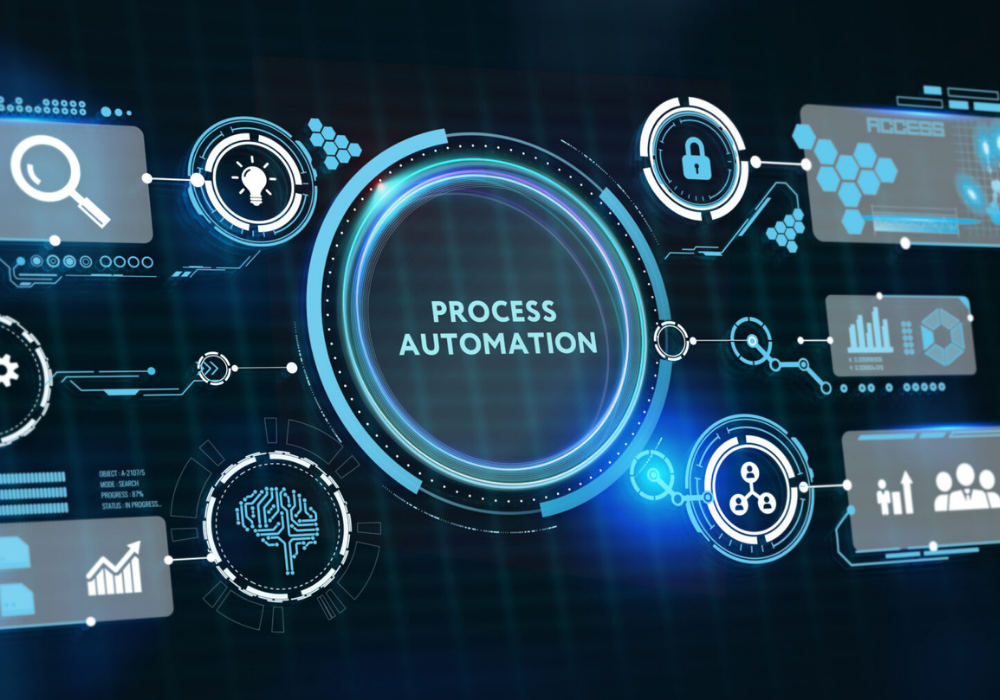How RPA Cuts Lease Onboarding by 40%

Learn how RPA cuts lease onboarding by 40% through automation of manual rental tasks. Discover faster, smoother onboarding with SmartTechNXT solutions.
From First Click to Full Workflow: Automating Client Onboarding with RPA

From First Click to Full Workflow: Automating Client Onboarding with RPA Client onboarding is one of those business processes that should feel seamless but all too often, it’s anything but. Between back and forth emails, manual data entry, form chasing, and compliance checks, the process can become a maze of small but time consuming steps. That’s where Robotic Process Automation (RPA) steps in bringing speed, consistency, and a touch of sanity to your onboarding workflow. Why Onboarding Needs Automation First impressions matter. A clunky or delayed onboarding experience can leave new clients feeling unsure about their decision to work with you. Manual processes are not only slow, but prone to mistakes from incorrect client details in your CRM to missed steps in compliance procedures. RPA solves this by taking over the repetitive, rule based tasks that slow your team down and risk errors. What RPA Does (and Does Well) The beauty of RPA lies in its ability to link different systems together. When a new client clicks “Sign Up” or fills out a form, an RPA bot can spring into action: pulling their information, populating forms, creating records in CRMs or ERPs, sending confirmation emails, and even kicking off necessary compliance or verification checks. All of this happens automatically, with minimal need for human involvement. Consistency Every Time One of the biggest wins is standardisation. With bots following the same rules every time, you can ensure every client receives the same quality onboarding experience no missed steps, no forgotten emails, no misplaced documents. It’s like having a super efficient assistant working quietly in the background, making sure everything’s in order. Freeing Up Your Team for What Matters By automating the admin side of onboarding, your team can spend more time where it really counts building relationships, solving client problems, and providing value. RPA doesn’t replace your team; it just removes the time consuming bits so they can do more of the meaningful stuff. Scales As You Grow Whether you’re onboarding five new clients a month or five hundred, RPA scales without fuss. You don’t need to hire extra hands just because business is booming your digital workforce handles the load effortlessly. Client onboarding shouldn’t be a bottleneck. With RPA, it becomes one of your strongest operational advantages efficient, reliable, and ready to impress from the very first click.
Why SMEs Choose Ignxtion Over Traditional RPA Suites

Why SMEs Choose Ignxtion Over Traditional RPA Suites When it comes to automation, small and medium-sized enterprises (SMEs) need solutions that are fast, flexible, and financially sensible. While traditional RPA suites promise big results, they often come with even bigger price tags, complex deployments, and resource-heavy maintenance. That’s where Ignxtion stands out, designed with the needs of SMEs in mind. No Enterprise Bloat Most legacy RPA platforms were built for massive organisations with equally massive IT departments. They’re powerful, but they also come with layers of technical setup, long implementation cycles, and bloated features SMEs simply don’t need. Ignxtion strips away the noise and focuses on delivering smart, easy-to-use automation that fits the scale and speed of a growing business. Quick to Deploy, Easy to Manage SMEs don’t have months to wait or full-time automation teams to manage implementation. Ignxtion makes getting started easy, with guided bot creation, and minimal tech requirements. Most businesses can launch their first bot in weeks, not months without needing to overhaul their systems or call in expensive consultants. Affordable Without Compromise Budget is everything when you’re a small business. Traditional RPA licenses often require long term commitments and steep upfront costs. Ignxtion offers flexible pricing models, including pay as you grow options, so SMEs can start small and scale without financial strain. It’s automation that makes sense even when the margins are tight. Tailored for SME Workflows Whether it’s automating invoices, managing customer data, handling compliance tasks, or onboarding new employees, Ignxtion focuses on the processes that matter most to smaller teams. It doesn’t try to be everything for everyone it just makes the work you already do a lot smoother. Local Support, Real Help One of the frustrations with traditional RPA suites is navigating support especially when it’s based in a different time zone or delivered via endless help desk tickets. Ignxtion offers accessible, human centred support designed to help you move fast and fix things quickly. You’re never left in the dark. Scales with You As your business grows, Ignxtion grows with you. There’s no need to migrate or start over you can build on what you’ve already automated, add new bots as needed, and explore more complex workflows when the time is right. It’s a future proof investment without the enterprise overhead. For SMEs looking to modernise their operations without drowning in complexity or cost, Ignxtion offers the ideal middle ground: smart, scalable automation that actually fits the way you work.
Why RPA Empowers Women in Business and What That Means for the Future

Why RPA Empowers Women in Business and What That Means for the Future Robotic Process Automation (RPA) might sound like a back-end tech solution, but its ripple effects are reshaping the way work gets done, especially for women in business. Whether you’re running your own company, climbing the corporate ladder, or juggling multiple responsibilities simultaneously, automation is quietly becoming a powerful ally. And it’s not just about getting more done it’s about opening doors. Levelling/ the Playing Field One of the biggest challenges women often face in business is time. Balancing administrative responsibilities with strategic thinking, managing workloads across professional and personal spheres, there’s often simply too much to handle. RPA helps by automating time-consuming, repetitive tasks like data entry, invoice processing, scheduling, and reporting. This frees up hours each week, time that can be redirected towards leadership, innovation, building something new or simply quality time with the family. Making Entrepreneurship More Accessible For women starting their own ventures, resources can be limited. You’re often the marketer, the finance team, the operations manager, and the client services rep all in one. RPA lightens the load by handling the repetitive admin work that might otherwise require hiring early staff. It lets solo founders do more with less, meaning they can scale faster and stay competitive without burning out or sacrificing quality. Opening Flexible Work Opportunities The rise of automation also means a shift in the types of roles businesses need. Instead of hiring for repetitive admin tasks, companies are looking for thinkers’ people who can manage bots, optimise workflows, and lead strategy. This opens up more flexible, higher impact opportunities for women who want to design careers around their strengths, whether that’s working remotely, on flexible hours, or focusing on creative leadership. Boosting Confidence with Tech There’s a longstanding myth that tech is intimidating or out of reach, but the new generation of RPA platforms is changing that. You don’t need to be a developer to use RPA. Many tools are low-code or no-code, meaning women from all backgrounds can learn to automate parts of their workflow. That kind of confidence boost, when you see how much impact you can have with the right tools, can be game-changing. What This Means for the Future When women have the tools to save time, work smarter, and lead boldly, everyone benefits. Businesses become more inclusive, productivity goes up, and innovation accelerates. RPA isn’t just about efficiency; it’s about creating space for better ideas, fairer opportunities, and stronger leadership. In the end, automation is not about removing people from the process. It’s about empowering them, and for women in business, that means more time, more control, and more room to grow.
The ROI of RPA: What Real Businesses Gain from Automation

The ROI of RPA: What Real Businesses Gain from Automation When businesses talk about automation, it’s easy to focus on the flashy tech or the promise of doing things faster. But the real story lies in what Robotic Process Automation (RPA) brings to the table in terms of actual return on investment (ROI). From cutting costs to unlocking staff potential, here’s how companies are gaining measurable value from RPA. Time Back on the Clock RPA handles repetitive, time-consuming tasks. Think invoice matching, timesheet approvals, or generating monthly reports. By automating these processes, teams save hours every week. That time doesn’t just disappear, it gets reinvested into higher-value work like customer service, project planning, or strategic decision-making. For many businesses, this shift alone creates an instant performance boost. Reduced Manual Errors Manual processes often mean inconsistencies, missing data, or duplicated entries. These errors don’t just waste time; they can lead to regulatory issues or missed revenue. By automating key workflows, businesses reduce the risk of manual error and improve data accuracy across departments. It’s a simple change that brings peace of mind and cuts down on the cost of fixing mistakes. Lower Operational Costs One of the most obvious ROI wins is cost reduction. Instead of hiring additional headcount for growing admin demands, businesses can implement RPA bots to take on the routine tasks. This helps control payroll growth and lowers processing costs, particularly in departments like finance, HR, and customer support. Faster Turnaround Times RPA doesn’t take breaks, doesn’t get tired, and can work 24/7. That means tasks like generating reports, sending customer notifications, or updating records happen much faster. Clients notice the difference when their queries get resolved quickly or orders are processed more efficiently, driving stronger customer satisfaction and loyalty. Scalability Without the Stress As businesses grow, the volume of admin work grows too. With RPA, scaling operations doesn’t mean scaling your stress levels. Bots can be added or adjusted as demand increases, helping businesses manage busy periods or expansions without hiring a whole new team. Real Examples, Real Gains A logistics company automating its inventory checks reduced delays and avoided overstock. A short-term finance company saved 500 hours a week across its branches by automating its compliance controls. A healthcare provider cut appointment scheduling time in half, improving patient satisfaction. A retail chain using RPA for invoice processing reported a 30% drop in admin costs. These aren’t hypotheticals, they’re real businesses seeing real returns. In short, RPA isn’t just a tech trend, it’s a practical tool that delivers tangible ROI across industries. Whether you’re a growing SME or a large enterprise, automation can help you work smarter, stay lean, and focus on what truly matters.
Audit-Proof Your Business: Using Automation to Stay Compliant

Audit-Proof Your Business: Using Automation to Stay Compliant In the world of business, few words cause as much anxiety as “audit.” Whether it’s financial, operational, or regulatory, audits require a level of transparency, consistency, and documentation that many small to mid-sized businesses struggle to maintain. That’s where automation steps in, not as a quick fix, but as a long-term strategy to embed compliance into your daily operations. Robotic Process Automation (RPA) doesn’t just streamline workflows,it creates systems that are inherently audit-ready. With the right processes in place, businesses can shift from reactive scrambling to proactive compliance, no matter the industry. The Cost of Manual Compliance Manual compliance processes come with a long list of risks: missed deadlines, inconsistent documentation, manual mistakes, and difficulty retrieving records when needed. When compliance tasks are spread across departments or rely heavily on individuals, it’s easy for important steps to be skipped or overlooked entirely. This is where RPA becomes a powerful ally. By automating routine compliance-related tasks, businesses reduce reliance on memory, email threads, or spreadsheets, and start building a digital backbone that supports audits before they even happen. Automating the Compliance Lifecycle Automation can be applied across multiple areas of compliance: Document Management: Automatically store, categorise, and archive key files with proper naming conventions and retention schedules. Data Entry & Reporting: Ensure consistency across systems by using bots to populate forms, verify inputs, and generate standardised reports. Deadline Monitoring: Bots can be programmed to track key compliance dates and send alerts or initiate actions well in advance of submission deadlines. Access Control: RPA helps enforce permission protocols by managing who can view or edit sensitive information, reducing the risk of internal breaches. These automated actions aren’t just efficient, they create a consistent trail of evidence that’s easily accessible during audits. Built-In Audit Trails One of the greatest strengths of RPA is its transparency. Every action a bot performs is logged, what was done, when, and by whom (or what). This built-in audit trail makes it easy for businesses to respond to compliance requests with detailed, time-stamped records. Reducing Risk, Not Control Some worry that handing tasks to automation means giving up oversight. In fact, it’s the opposite. RPA enables businesses to define exact parameters for how compliance processes should be handled, and then ensures they’re followed consistently every time. It also provides managers and compliance teams with real-time visibility into workflows, something manual processes rarely deliver. Future-Ready Compliance for Growing Businesses As regulatory environments become more complex, staying compliant will only get harder without scalable systems in place. Automation provides that scalability. It allows growing businesses to maintain tight compliance controls without hiring additional admin staff or introducing bottlenecks. In short, if you want to audit-proof your business, don’t wait for the next deadline or inspection to take action. Start building an automated compliance foundation now. One that’s transparent, consistent, and always ready when auditors come knocking.
RPA & Data Privacy: How Automation Helps Businesses Stay Secure

RPA & Data Privacy: How Automation Helps Businesses Stay Secure In today’s digital world, data privacy is more than just a best practice it’s a business imperative. Whether you’re handling sensitive customer records, employee information, or financial data, protecting that information isn’t optional. For small to mid sized businesses (SMEs), this can feel overwhelming, especially when resources are stretched thin. Robotic Process Automation (RPA) can assist, not just to streamline operations, but to strengthen security and help businesses stay compliant with data privacy regulations. Why Data Privacy is Everyone’s Business From GDPR to POPIA, global and local regulations are clear: businesses must safeguard personal information. Non compliance can result in heavy penalties, reputational damage, and loss of customer trust. The challenge? Many privacy risks stem from manual handling of data think emails sent to the wrong person, spreadsheets left unsecured, or inconsistent data access practices. This is where automation makes a real difference. Minimising Manual Handling = Minimising Risk One of the biggest culprits behind data privacy issues is manual processing. When team members are required to access, duplicate, or move data across platforms, the chances of a mistake increase. With RPA, businesses can automate these repetitive, high risk tasks. For example, bots can be programmed to: Extract data from secure databases Input it into approved systems without deviation Monitor access points to ensure only authorised users interact with sensitive data This means fewer manual errors and a more consistent, traceable process from start to finish, with no person seeing the confidential data. Built In Audit Trails and Access Controls RPA platforms typically offer detailed logging and monitoring capabilities. Every bot action is recorded what data was accessed, when, and by whom (or what). This provides an automatic audit trail, which is gold when it comes time for compliance checks or security reviews. Additionally, RPA systems can be configured with strict access controls. Only certain users or bots are permitted to handle sensitive data, reducing exposure and ensuring that privacy protocols are followed without fail. Supporting Compliance Without the Stress Staying compliant doesn’t have to mean more admin. In fact, RPA reduces the impact of human intervention in data heavy processes freeing up your team while reducing the likelihood of non compliance. Whether it’s auto deleting records after a retention period or flagging unusual access patterns, automation helps businesses keep pace with regulatory demands in real time. A Smart Investment in Secure Growth For SMEs in particular, automation is a cost effective way to improve data security without hiring an entire compliance team. It’s not about replacing people it’s about giving them tools that reduce risk, simplify processes, and provide peace of mind. As data privacy becomes more central to customer expectations and legal requirements, embracing RPA isn’t just smart it’s necessary. The businesses that adopt automation early aren’t just more efficient they’re more secure, better prepared for audits, and more trusted by the people they serve.
The Hidden Costs of Non Compliance (And How RPA Eliminates Them)

The Hidden Costs of Non Compliance (And How RPA Eliminates Them) Non compliance can be a silent threat to business operations especially for small and mid sized enterprises (SMEs) juggling limited resources and growing demands. While many think of non compliance costs as limited to fines and penalties, the reality is far more complex and damaging. Reputational hits, operational slowdowns, and lost customer trust are just some of the ripple effects that can derail even the most promising business. This is where Robotic Process Automation (RPA) comes into play. By introducing automation into compliance related workflows, businesses can safeguard themselves from the hidden (and very real) costs of falling short on regulatory obligations. The True Price of Getting It Wrong Let’s unpack the lesser known consequences of non compliance: Financial Penalties: These can be hefty and immediate but they’re often just the tip of the iceberg. Reputation Damage: A single lapse can make clients, partners, or investors question your professionalism and reliability. Operational Disruptions: Failing an audit may lead to investigations or the need to halt certain processes while issues are addressed. Employee Time and Stress: Remediation work often under tight timelines pulls teams away from core tasks, draining productivity. Customer Loss: Particularly in sectors like healthcare, insurance, and finance, data mishandling or failure to follow regulations can result in customer churn and loss of trust. All of these outcomes are preventable, but they require consistent and error free processes something humans alone can’t guarantee at scale. How RPA Minimises Risk Robotic Process Automation offers a reliable way to embed compliance into day to day operations without burdening employees. Here’s how it works: Standardised Execution: Bots carry out tasks the same way every time eliminating inconsistencies in document handling, reporting, and regulatory filings. Real Time Monitoring: Automated systems can flag irregularities as they happen, allowing for quicker responses before issues escalate. Timely Submissions: Bots track deadlines and automatically prepare or file required reports ensuring no submission is missed. Built In Logs: Every action a bot takes is recorded, creating a detailed audit trail that can be presented instantly when needed. Secure Data Handling: RPA platforms are designed with security in mind, helping businesses adhere to data protection and privacy regulations with greater precision. A Proactive Approach to Compliance The biggest mistake SMEs make is treating compliance as a periodic task rather than a continuous responsibility. By integrating RPA into compliance operations, businesses move from reactive to proactive. Instead of scrambling to correct errors or chase down missing documents, teams can rely on automated systems that manage and monitor compliance in real time. A Smarter, Safer Way to Operate Ultimately, RPA isn’t about replacing people it’s about removing the burden of repetitive, error prone tasks so your team can focus on higher value work. And when it comes to compliance, that shift is more than a convenience it’s a protective measure. Investing in automation is a fraction of the cost of recovering from a compliance breach. More importantly, it empowers SMEs to scale confidently, knowing their systems are aligned with industry standards and regulatory expectations. By eliminating the risks and inefficiencies of manual compliance, RPA doesn’t just save time it saves your reputation, your bottom line, and your future.
Why SMEs Can’t Afford to Ignore Compliance Automation

Why SMEs Can’t Afford to Ignore Compliance Automation For small and medium-sized enterprises (SMEs), compliance is often one of the most complex and resource-draining responsibilities. Whether it’s data protection laws like POPIA or GDPR, financial reporting standards, labour regulations, or industry-specific mandates, the burden of staying compliant falls heavily on lean teams that are already juggling daily operations. One overlooked deadline or misfiled document can result in hefty fines, legal complications, and long-term damage to your brand’s credibility. That’s why compliance automation isn’t just a “nice to have” anymore. It’s quickly becoming essential for SMEs that want to grow without being bogged down by manual processes and unnecessary risk. The Hidden Cost of Compliance Many SMEs still manage compliance using spreadsheets, shared drives, and manual checklists. While this may feel manageable at first, it quickly becomes unsustainable as the business scales or regulations evolve. Manual compliance processes are: Time-consuming: Employees spend countless hours updating reports, tracking deadlines, or verifying documentation. Error-prone: Human oversight can lead to missed steps, inaccurate filings, or inconsistent recordkeeping. Reactive: Businesses often scramble to meet requirements at the last minute instead of proactively managing risks. The result? Compliance becomes a stress point, not a strength. And in today’s regulatory environment, that’s a risk SMEs simply can’t afford. What Compliance Automation Offers Automating compliance processes with tools like Robotic Process Automation (RPA) transforms how SMEs handle their obligations. From data handling and reporting to audit preparation and document verification, RPA bots can: Automatically collect, organise, and validate data from multiple systems. Ensure that records are accurately updated and time-stamped. Trigger alerts for upcoming deadlines and flag inconsistencies. Generate compliance reports in real time, ready for internal review or audit submission. By reducing manual input and increasing accuracy, automation removes the bottlenecks that make compliance feel overwhelming. Staying Ahead in a Regulated World Regulatory expectations are only growing, and many now require faster response times, clearer audit trails, and better data hygiene. SMEs that adopt automation tools position themselves to meet these expectations more efficiently, and with far less risk. Automating compliance also means fewer disruptions during audits, better internal transparency, and a more reliable foundation for future growth. Importantly, compliance automation allows SMEs to shift from a reactive approach to a proactive one. Instead of catching up with regulations, you’re keeping ahead of them, ensuring that your business remains resilient, trusted, and scalable. Compliance Is Never An Option! Compliance isn’t optional, and for SMEs, the cost of getting it wrong is higher than ever. But it doesn’t have to be a drag on resources or growth. With automation, SMEs can streamline compliance efforts, reduce the risk of penalties, and give teams more time to focus on strategic work, not paperwork. In a fast-moving business world, ignoring compliance automation isn’t just inefficient. It’s a risk you can’t afford.
6 Processes You can Automate Right Now with Ignxtion

6 Processes You can Automate Right Now with Ignxtion Intro Do you still think automation takes months to implement? Not with Ignxtion. Whether you’re running a finance team, managing HR processes, or overseeing operations, there are high-impact automations , without writing a single line of code. Here are six ready-to-use use cases powered by Ignxtion that will instantly save you time and stress. Automate Incoming Invoice Matching Use Case: Finance TeamsHow it works: Ignxtion reads scanned invoices, extracts relevant data, matches them to POs, and flags exceptions. Feature Highlight: Natural Language Processing + Spreadsheet AutomationPerfect for: Monthly reconciliation, compliance, and auditing. Auto-Trigger Onboarding Flows for New Hires Use Case: HR DepartmentsHow it works: Once a candidate signs their contract, Ignxtion automatically sets up email accounts, calendar invites, and equipment requests. Feature Highlight: Drag-and-Drop Workflow Builder + Form AutomationEliminates email back-and-forth between HR and IT. Email Parsing for Lead Qualification Use Case: Sales & MarketingHow it works: The platform scans incoming emails for intent (e.g., “Interested in demo”), logs them into your CRM, and sends a templated response. Feature Highlight: AI-Powered Email Analysis + CRM IntegrationTurn inbox chaos into a qualified lead pipeline. Inventory Level Monitoring and Supplier Alerts Use Case: Manufacturing & WarehousingHow it works: When stock falls below set thresholds, Ignxtion triggers order workflows to preferred suppliers. Feature Highlight: Spreadsheet Automation + API IntegrationNo more urgent stockouts. Financial Reporting on Autopilot Use Case: SMEs using Excel/Google SheetsHow it works: Ignxtion pulls data from accounting software and formats reports by month, category, or customer. Feature Highlight: Dynamic Data Analysis + Automated FormattingGet investor-ready reports without crunching numbers manually. Build and Launch Custom Workflows in Minutes Use Case: Any departmentHow it works: Use Ignxtion’s intuitive interface to drag, drop, and deploy automation, no IT bottlenecks required. Feature Highlight: Auto-Generate Workflows from Goal Inputs“I want to automate monthly customer feedback surveys.” Done. Conclusion Automation isn’t just the future, it’s today’s competitive advantage. With Ignxtion, you don’t need time, code, or budget. You just need vision.